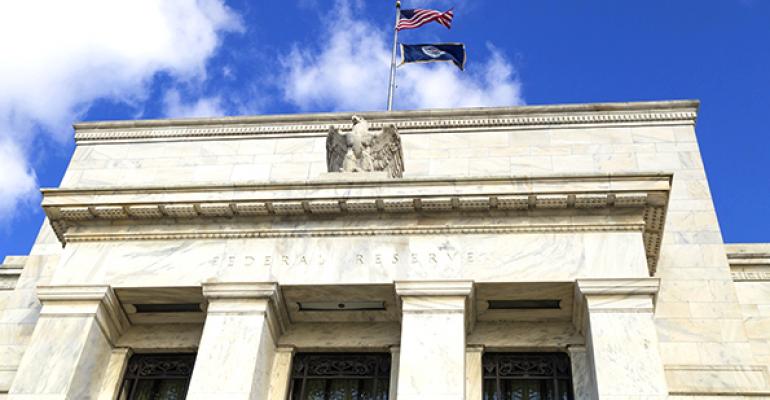After months of market volatility, the Federal Reserve opted to leave its key interest rate steady during its March meeting, betraying a more subdued outlook for the U.S. economy.
The Fed decided to maintain the current level of interest rates at 0.25 to 0.50 percent, following the two-day discussion of economic outlook both globally and in the United States. The Fed also reiterated that the federal funds rate should increase “gradually,” proving those in the commercial real estate industry who expected four interest rate hikes this year wrong.
According to Fed Chair Janet Yellen, “The median projection for the federal funds rate rises only gradually, to 9/10th of a percent late this year, and 1.9 percent next year. As the factors restraining economic growth are projected to fade further over time, the median rate rises to 3.0 percent by the end of 2018, close to its longer run normal level. Compared with projections made in December, the median path is about one-half percentage point lower this year and next. The median longer run normal federal funds rate has been revised down as well.”
The Fed’s complete statement can be found here.
The Fed expects to make only two interest rate increases in 2016. In its coverage of the decision, Forbes asked the next logical question: when will the Fed make its first rate increase? “Whether it is core inflation or headline inflation, we are seeing the effects of low energy prices fading from year-over-year comparisons and we are starting to see gradual gains. The Fed wants to see that…’That’s a factor that would give Fed the confidence to raise rates later this year,’” PNC’s Deputy Chief Economist Gus Fuacher told Forbes.
CNN, however, credited the Fed’s decision to a “darker economic view,” noting that “Those cuts reflect concerns about how much the slowdown is impacting American growth.”
Among the reasons cited for a hold-off on a rate increase, Yellen noted that “involuntary part-time employment remains somewhat elevated, and wage growth has yet to show a sustained pick-up.” She also referred to “persistent economic headwinds that weigh on aggregate demand,” among them struggling foreign economies, a slow pace of household formation and low productivity growth.
For the commercial real estate community, however, the pause in interest rate hikes is welcome news.
“Holding rates steady is the Fed's attempt to calm market volatility. Although holding rates will have minimal impact on short-term base rates (LIBOR) or the long-end of the curve, a period of less volatility could compress credit spreads, improving borrowing conditions in commercial real estate,” CBRE Head of Research for the Americas, Spencer Levy, said in a statement.
CBRE’s report on the Fed decision found that “no immediate impact on lending rates to commercial real estate is expected, but less volatility should slowly narrow credit spreads.”
As this commercial real estate cycle seems to have reached its peak, mortgage lenders are already becoming more conservative.
As of now, however, the Fed does expect interest rate increases later in 2016, as inflation is expected to grow and employment numbers continue to improve. The Fed expects to see an inflation rate of 1.2 percent in 2016, 1.9 percent in 2017 and 2.0 percent in 2018, provided the impact from the drop in oil prices and a strong U.S. dollar stop weighing on overall consumer prices.
Economist Neil Dutta, of Renaissance Macro Research LLC, told Bloomberg Business that continued references made to the world economy in Yellen’s speech “pushes the Fed in the role of the world’s central bank. In this role, the Fed needs to let inflation in the U.S. surge to offset disinflation in the rest of the world.”

